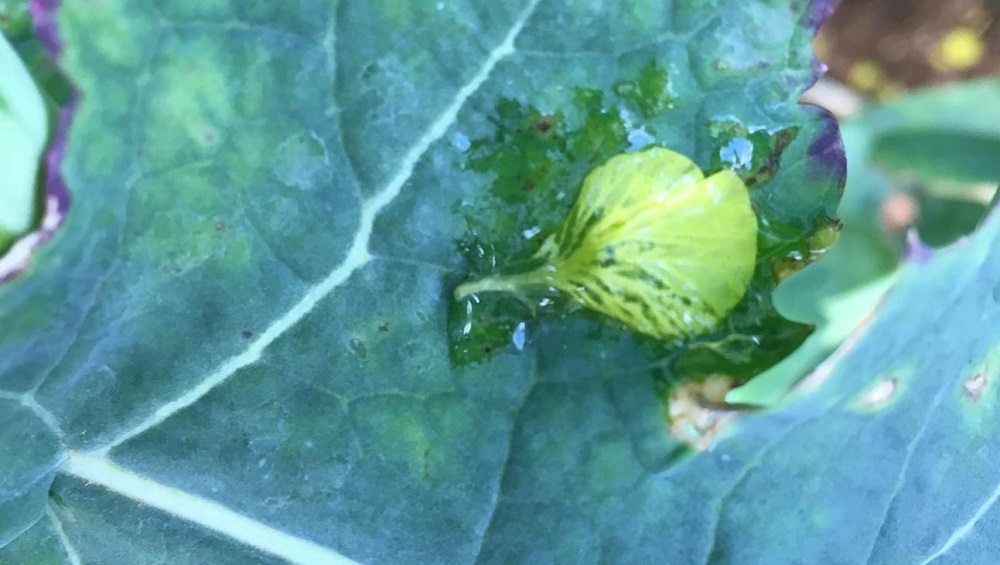- Home
- Knowledge library
- Sclerotinia stem rot in oilseed rape
Sclerotinia stem rot in oilseed rape
Sclerotinia stem rot is usually the main disease to consider during the flowering stages of oilseed rape.
Although the infection cycle of Sclerotinia sclerotiorum is complex, a good understanding of the three main risk factors – the presence of sclerotinia inoculum, warm and humid weather conditions and crops in flower – will help you target control.
Symptoms
The pathogen that causes sclerotinia (Sclerotinia sclerotiorum) in oilseed rape can also infect other crops, such as potatoes, peas, carrots and many other vegetables. In oilseed rape, when lower main stems are infected, white stem lesions form with black sclerotia within the stem cavity. Infection can cut off the supply of food and water to the canopy. In extreme situations, whole plants can be lost. If infection occurs during later flowering, infection tends to be limited to the lateral branches with a much less damaging effect on yield.
Life cycle
Sclerotinia in oilseed rape is caused by the fungal pathogen Sclerotinia sclerotiorum. The infection cycle is complex and requires three main factors: the presence of sclerotinia inoculum, warm and humid weather conditions and crops in flower.
In spring, sclerotinia fungal resting bodies (sclerotia) in the soil germinate. This usually occurs when soils are moist and warm (>10°C). Pale brown fruiting bodies (apothecia) are then produced that release airborne ascospores.
These spores land on oilseed rape petals and stick to other plant surfaces (especially if there is light rain). The spores require external nutrients, derived from petals and pollen, to enable them to germinate and infect the plant. Plant infection also requires long periods of high humidity and night-time temperatures above 7°C. Sclerotinia spreads from leaf lesions to the stem. Stem lesions increase in size, girdling the stem resulting in premature ripening and weakening stems. Eventually, stems can lodge. New sclerotia are formed within the stem cavity and roots. These are often returned to soil at harvest.
Importance
Soil-borne diseases, such as sclerotinia stem rot, clubroot and verticillium wilt (also known as verticillium stem stripe), have increased in recent years, favoured by shorter rotations. Sclerotinia stem rot is usually the main disease to consider at flowering. Crops in the UK are affected less severely than those in some parts of Europe. There were epidemics in 2007 and 2008 and localised problems occur in most years. The disease often causes little damage but can halve yields when severe. It also poses a threat to other broad-leaved crops in the rotation.
Risk factors
- Rotations (short rotations, especially those that include other susceptible crop hosts increase the risk)
- A history of previous sclerotinia infection on-farm
- Favourable weather (e.g. mild day and night temperatures with light rain or dew)
- Crop growth stage (crop in flower)
- Presence of sclerotinia inoculum (e.g. based on petal tests)
- Germination activity of sclerotia
- Fungicide choice and timing (protectant fungicides need to be applied before infection to achieve good control)
Management
It may be necessary to extend rotations at sites with severe epidemics.
Fungicide timing is important for good control, as products available to control sclerotinia stem rot are protectants and have little or no curative activity.
The optimum timing for a single spray is, usually, just before mid-flowering on the main raceme and prior to significant petal fall. Treatments provide good control for about three weeks. Two sprays may, therefore, be required to protect crops at high risk sites throughout the flowering period (especially when the flowering period is extended).
Fungicides differ in their physiological effects on the crop and also efficacy against other diseases that may require control during flowering (e.g. light leaf spot). Whether additional disease control or growth regulation (e.g. to decrease lodging risk) is required should be considered when selecting products.
Strategies are required to minimise the risks of selecting for fungicide resistant strains of sclerotinia and other pathogens. No resistance to fungicides has been reported in the UK for sclerotinia and likelihood of it occurring can be decreased by using mixtures, co-formulated products and products with a different mode of action throughout flowering and the whole fungicide programme. Strains with decreased sensitivity to SDHIs and MBCs have been reported in France demonstrating the importance of implementing strategies now. It is important that fungicide resistance management guidelines are followed (e.g. do not rely on a single mode of action for sclerotinia stem rot control).
Biological control of sclerotinia with Coniothyrium minitans is also an option. The naturally occurring fungus colonises and deactivates soil-borne sclerotia, which limits potential for infection.
Fungicide performance data
Our fungicide performance work provides high-quality, independent information on the relative efficacy of fungicides against key diseases in wheat, barley and oilseed rape.
Historic fungicide performance data is available for sclerotinia
Further information
Weather-based sclerotinia infection risk alerts
 AHDB
AHDB

